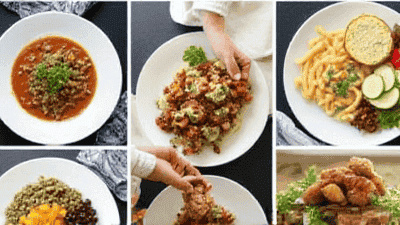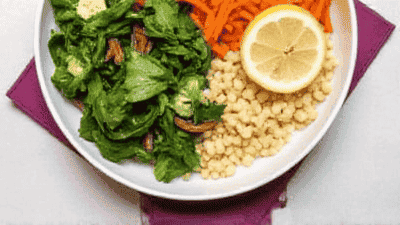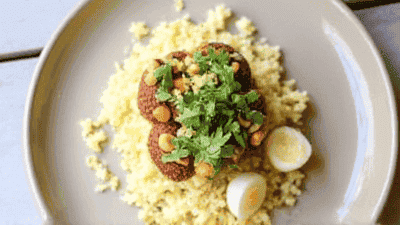
As more people embrace plant-based diets, the interest in vegan alternatives to traditional meat products has surged. A vegan diet can provide all the necessary nutrients for a healthy lifestyle while reducing the impact on the environment and improving animal welfare. However, transitioning can initially seem overwhelming, especially concerning ensuring adequate protein intake and overall nutrition.
Before diving into the meal plan, it’s essential to understand the various plant-based protein sources available that can act as substitutes for meat. Here are some of the primary options:
Legumes, such as lentils, beans, and chickpeas, are excellent sources of protein and fiber. They provide iron, folate, and other essential nutrients.
Tofu and tempeh are made from soybeans, offering a complete protein profile. Tofu is versatile and can absorb flavors well, while tempeh has a firmer texture and nuttier flavor.
Seitan, made from wheat gluten, has a chewy texture that resembles meat, making it a popular meat substitute in many dishes.
Nuts and seeds, such as almonds, chia seeds, and pumpkin seeds, provide healthy fats, protein, and various vitamins and minerals.
Grains like quinoa, brown rice, and barley not only provide protein but also serve as a source of carbohydrates and fiber.
With the rise of the vegan movement, various companies produce plant-based meat alternatives like burgers, sausages, and nuggets, designed to mimic traditional meats in taste and texture.

Adopting a vegan diet can have numerous benefits, including:
Breakfast: Chickpea Scramble
Ingredients: 1 cup chickpeas (canned or cooked), 1 tablespoon olive oil, 1/4 cup diced onion, 1/4 cup bell pepper, turmeric, salt, and pepper.
Instructions:
Nutrition: Approx. 20g protein, 10g fiber.
Lunch: Lentil Salad
Ingredients: 1 cup cooked lentils, cherry tomatoes, cucumber, parsley, olive oil, lemon juice.
Instructions:
Nutrition: Approx. 18g protein, 12g fiber.
Dinner: Black Bean Tacos
Ingredients: Taco shells, 1 can black beans, avocado, salsa, lettuce.
Instructions:
Nutrition: Approx. 15g protein, 10g fiber.
Breakfast: Tofu and Veggie Stir-Fry
Ingredients: 1/2 block firm tofu, mixed vegetables, soy sauce, sesame oil.
Instructions:
Nutrition: Approx. 25g protein.
Lunch: Tofu Wrap
Ingredients: Whole-grain wrap, 1/2 block tofu, spinach, hummus.
Instructions:
Nutrition: Approx. 20g protein.
Dinner: Stir-Fried Tofu with Broccoli and Rice
Ingredients: 1 block tofu, broccoli florets, brown rice, garlic.
Instructions:
Nutrition: Approx. 28g protein.
Breakfast: Quinoa Breakfast Bowl
Ingredients: 1 cup cooked quinoa, almond milk, fruits, chia seeds.
Instructions:
Nutrition: Approx. 15g protein.
Lunch: Seitan Stir-Fry
Ingredients: 1 cup sliced seitan, bell peppers, onions, soy sauce.
Instructions:
Nutrition: Approx. 25g protein.
Dinner: Seitan Fajitas
Ingredients: Whole wheat tortillas, seitan, avocado, salsa, bell peppers.
Instructions:
Nutrition: Approx. 30g protein.
Breakfast: Peanut Butter Smoothie
Ingredients: 1 banana, 2 tablespoons peanut butter, almond milk, spinach.
Instructions:
Nutrition: Approx. 15g protein.
Lunch: Mixed Bean Salad
Ingredients: 1 cup mixed beans, cherry tomatoes, parsley, olive oil.
Instructions:
Nutrition: Approx. 20g protein.
Dinner: Chickpea Curry
Ingredients: 1 can chickpeas, coconut milk, curry powder, spinach.
Instructions:
Nutrition: Approx. 18g protein.
Breakfast: Tempeh Bacon
Ingredients: 1 block tempeh, soy sauce, maple syrup, smoked paprika.
Instructions:
Nutrition: Approx. 20g protein.
Lunch: Tempeh Sandwich
Ingredients: Whole grain bread, sliced tempeh, lettuce, tomato, mustard.
Instructions:
Nutrition: Approx. 22g protein.
Dinner: Tempeh Stir-Fried Rice
Ingredients: Cooked brown rice, tempeh, vegetables, soy sauce.
Instructions:
Nutrition: Approx. 26g protein.
Breakfast: Breakfast Burrito with Vegan Sausage
Ingredients: Vegan sausage, whole grain tortilla, beans, avocado.
Instructions:
Nutrition: Approx. 25g protein.
Lunch: Vegan Meatball Sub
Ingredients: Vegan meatballs, whole grain sub roll, marinara sauce, spinach.
Instructions:
Nutrition: Approx. 28g protein.
Dinner: Vegan Burger with Sweet Potato Fries
Ingredients: Vegan burger patty, lettuce, tomato, whole grain bun, sweet potatoes.
Instructions:
Nutrition: Approx. 30g protein.
Breakfast: Vegan Chia Pudding
Ingredients: 1/4 cup chia seeds, 1 cup almond milk, maple syrup, fruits.
Instructions:
Nutrition: Approx. 10g protein.
Lunch: Stuffed Bell Peppers
Ingredients: Bell peppers, quinoa, black beans, corn, spices.
Instructions:
Nutrition: Approx. 20g protein.
Dinner: Vegan Pasta Primavera
Ingredients: Whole grain pasta, mixed seasonal vegetables, olive oil, garlic.
Instructions:
Nutrition: Approx. 18g protein.

Meal Prep: Prepare ingredients like grains, beans, and sauces in advance to save time during the week.
Use Freezing: Cooking in bulk and freezing portions can make meal planning more manageable.
Experiment with Flavors: Use a variety of spices and sauces to keep meals exciting and flavorful.
Read Labels: When using store-bought vegan products, check nutrition labels to ensure they are low in unhealthy additives.
Stay Balanced: Aim for a variety of protein sources throughout the week to receive a spectrum of amino acids.
While a vegan meat plan can be nutritional, it’s essential to be mindful of some nutrients that may require extra attention:
Vitamin B12: A crucial vitamin for nerve function and the production of red blood cells, vitamin B12 is primarily found in animal products. Vegans can opt for fortified foods or supplements.
Iron: While plants provide non-heme iron, it’s often less bioavailable than the iron from animal sources. Pair iron-rich foods like lentils with vitamin C sources (like bell peppers) to enhance absorption.
Omega-3 Fatty Acids: Omega-3s are vital for brain health and can be found in flaxseeds, walnuts, and chia seeds. Consider adding these to your daily intake.
Calcium: Ensure adequate calcium intake through fortified plant milks, leafy greens, and tofu made with calcium sulfate, which can help maintain bone health.
Protein Variety: Do not rely solely on one source of protein. Include a diverse range of beans, legumes, nuts, and grains in your diet for optimal amino acid intake.

Transitioning to a vegan diet can be enjoyable, fulfilling, and beneficial for your health and the environment. By following this one-week vegan meat plan, you can easily incorporate a variety of nutritious and delicious meals into your routine. These meals provide the essential nutrients your body needs to thrive while allowing you to explore new flavors and ingredients.
Most importantly, listen to your body as you adapt to this new diet. Make adjustments based on your preferences and nutritional needs. With proper planning and a variety of plant-based foods, you can thrive on a vegan diet while enjoying all the benefits that come with it.